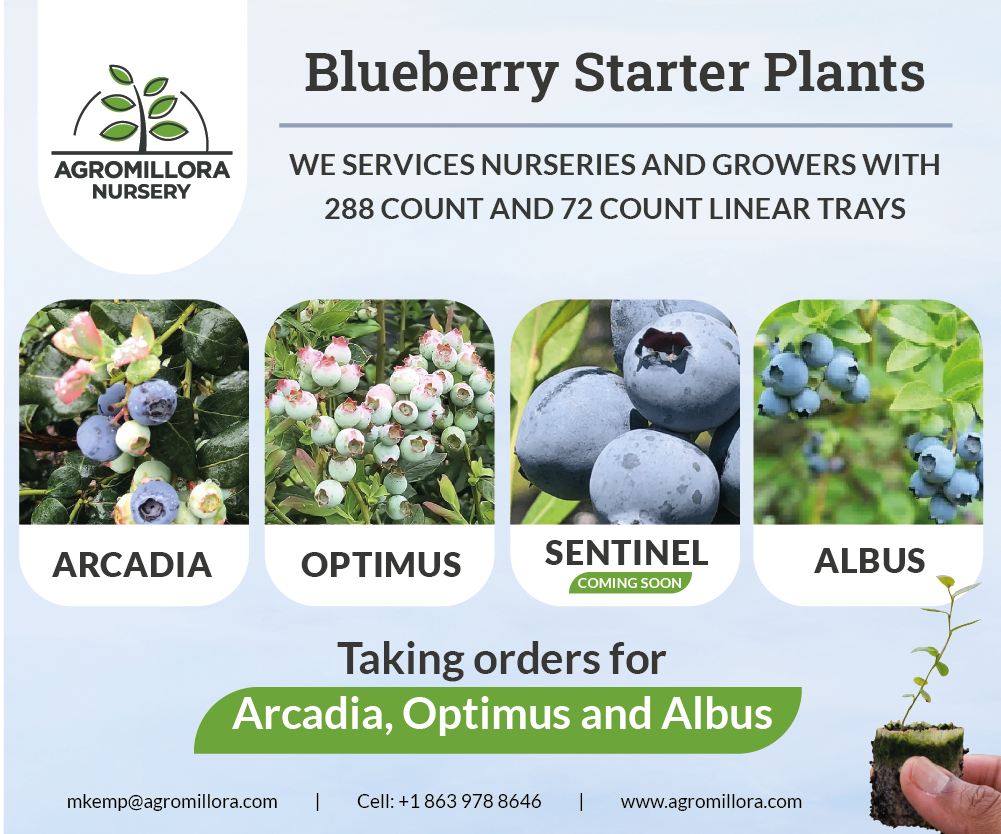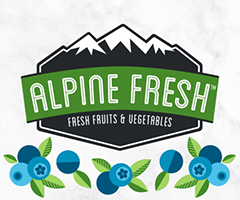Considerations for Hydrogen Cyanamide Use This Winter
As fall approaches, some blueberry growers are likely considering the possibility of using hydrogen cyanamide (HC) to minimize the negative effects of inadequate winter chill accumulation, which can be a common occurrence in Florida. HC is not compatible with the evergreen or organic production systems. However, conventional growers who use the deciduous production system may find a use for HC depending on a number of factors.
What Is HC?
HC is classified as a plant growth regulator (PGR) and is also a restricted-use pesticide. HC is highly toxic to humans (mammals) and the label has very specific restrictions for handling and application including specific personal protective equipment, an enclosed tractor cab, a closed transferring system for mixing, loading, and transferring, and other restrictions and precautions. Growers who lack the necessary licensing, expertise, or equipment may find it preferable to have HC custom applied by an experienced licensed applicator. Hydrogen cyanamide should be stored under cool conditions that do not exceed 68 F and away from direct sunlight. New HC should be purchased each year and not carried over from previous years. Orders are typically placed in the fall to allow for time needed to ship product to the southeastern U.S.
Why Is HC Sometimes Needed?
The traditional deciduous blueberry production system requires that plants enter winter dormancy (cessation of visible growth) and growth resumes in the late winter/early spring after exposure to a sufficient amount of cool temperature (referred to as the chilling requirement). Once the chilling requirement is satisfied, a period of warm weather is needed for the emergence of new growth. A challenge for growing blueberries in Florida when using the deciduous system is receiving enough cool winter weather to satisfy the chilling requirement. Inadequate chilling can result in delayed bud break, weak growth, protracted bloom, poor bloom synchronization, delayed and reduced fruit harvests, and plant stress which may lead to increased incidence of certain diseases. Growers attempt to address the problem of inadequate chilling either by using HC to assist with plant emergence from dormancy in the deciduous system, or by avoiding dormancy by using the evergreen system. There are advantages and disadvantages to each system. For our purposes, HC use assumes a traditional deciduous production system. For more information on the evergreen production, see Evergreen Production System for Southern Highbush Blueberries in Florida https://edis.ifas.ufl.edu/publication/HS1362.
Different cultivars vary in their sensitivity to, and potential benefit from, HC. Certain blueberry cultivars may benefit from HC in one or more of the following ways: earlier fruit harvest, slight increase in average berry size, concentrated bloom and harvest periods, and a reduction in plant stress caused by poor leafing. However, some cultivars are sensitive to HC and are easily damaged, and still other cultivars do not seem to respond to HC in a meaningful way. Historically, “Windsor,” “Primadonna,” and “Jewel” have often demonstrated above average sensitivity (injury) to HC. “Emerald” and “Farthing” have shown good tolerance and usually a good response to HC if sprayed when fully dormant with adequate pre-chilling. Less is known about HC repose for most of the newer cultivars because of limited experience and testing. Preliminary experience suggests that “Patrecia’ and “Vireo” respond well to HC, while “Optimus” and “Sentinel” may not respond well. However, research and observations are limited with many of these newer cultivars. Therefore, caution should be used when treating cultivars with unknown response to HC. Use a small-scale test before widespread use of HC on cultivars with unknown sensitivity and response to HC.
Responses Not as Consistent
It should be noted that plant responses to PGR treatments are generally not as consistent and predictable as are plant responses for other pesticides. Spray concentration and coverage, plant development stage, absorption and translocation of the PGR within the plant to the active site, weather before, during and after application, and the individual cultivar’s response to the PGR are some of the many factors that can influence the effectiveness of PGRs. In Florida, blueberry plant response to HC is believed to be affected by pre-treatment chill accumulation, level of dormancy, plant development stage, weather conditions, specific cultivar response to HC, spray concentration, spray volume, and probably other factors as well.
Research and observation have indicated that blueberry plants generally respond better to HC sprays when they are fully dormant and have accumulated some chilling before application. The exact amount of pre-chilling needed for a good HC response is not known and most likely is different for different cultivars. Product labels warn against use of HC under conditions of incomplete dormancy. It is generally thought that maximizing pre-chilling before HC application leads to a better and safer response for the plants. However, it is also generally believed that HC sprays should be made before a significant number of flower buds pass stage 2 of flower bud development (flower buds swollen with bud scales still closed, Figure 1). Illustrations of all the blueberry flower bud stages can be seen at the 2022 Florida Blueberry Integrated Pest Management Guide (https://edis.ifas.ufl.edu/publication/HS380). During mild winters, flower buds sometimes advance earlier than usual in the winter with a significant number of buds advancing beyond stage 2 when little pre-chilling has occurred. This situation seems to occur more often in central Florida than in north or north-central Florida. If HC is used under these conditions, it is often applied before the optimum level of prechilling occurs because of the advancing flower buds. Under these conditions, buds may be more susceptible to spray damage due to their incomplete state of dormancy.
In summary, for certain cultivars grown in the deciduous production system, HC may result in earlier and stronger vegetative growth and more concentrated bloom as plants emerge from dormancy. This can potentially lead to earlier berry harvest, larger average berry size, better cross-pollination and less plant stress from poor leafing. However, on non-tolerant cultivars, or under unusually warm winter conditions, HC may result in phytotoxicity which can reduce yields and cause plant stress. High-yielding cultivars that are not naturally strong leafing in the spring may have the most to gain from HC but small-scale tests should be conducted before use on cultivars with unknown response to HC, or before use under unusual weather conditions (particularly unusually mild winter weather with little prechilling before application). New HC should be used each year, and it should be stored under cool conditions away from direct sunlight. HC orders should be placed well in advance of expected use to allow time for shipping to the southeast U.S.
Dr. Gerado Nunez and Jeff Williamson will be presenting more information on the use of HC at the Fall Blueberry Short Course at Bonnet Springs Park in Lakeland on Oct. 25.
Additional Information
Harmon, P.F., O.E. Liburd, P. Dittmar, J.G. Williamson and D. Phillips. 2022 Florida Blueberry Integrated Pest Management Guide. https://edis.ifas.ufl.edu/publication/HS380
Williamson, J.G., D.A. Phillips, J.W. Olmstead, and P.M. Lyrene. 2020. Reproductive growth and development of blueberry. https://edis.ifas.ufl.edu/publication/HS220
Figure 1. Flower bud stage 2. Buds are swollen with closed bud scales. Stage 2 is believed to be a safe flower bud development stage for HC tolerant cultivars. Photo credit, Jeff Williamson.
Figure 2. Flower bud stage 3. Bud scales beginning to open. Flower bud stage 3, and more advanced bud stages, are generally more sensitive to HC and subject to injury from HC sprays. Photo credit, Jeff Williamson.





